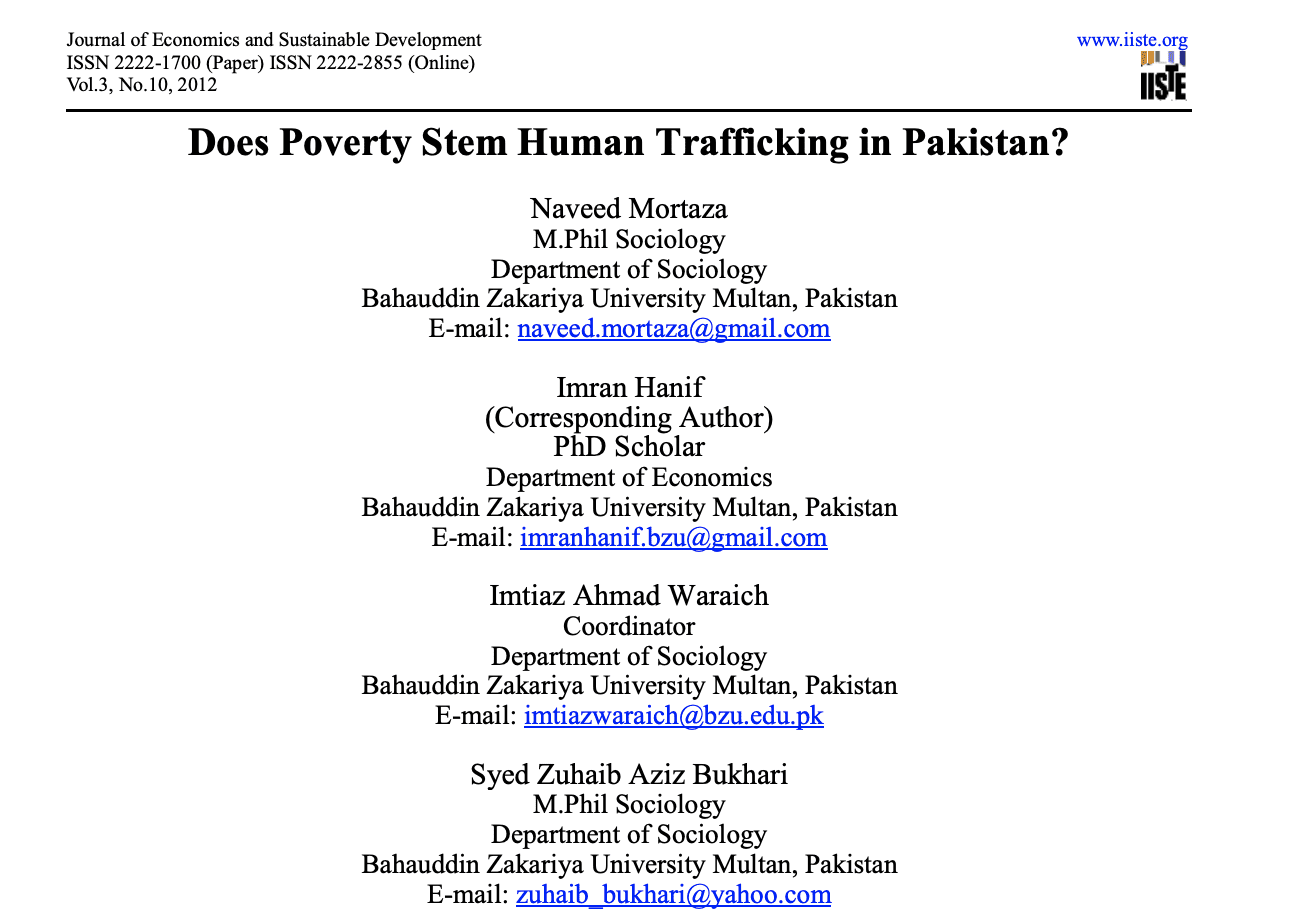
Does Poverty Stem Human Trafficking in Pakistan?
Abstract:
The present study has conducted to see the application and causes of Human Trafficking on effected families. The study based on primary data collected through case studies and survey. The study examined that poor economic conditions push people towards the glamorous world. Unemployment and political instability created the feelings of disparity and deprivation among people. Most of the times developed countries life style attracted the poor people and facilitate the immigration agents to hire the labour force by fraud. It has explored that poverty brings the people on roads and relative poverty was also the supportive factor in human trafficking. On one hand the poverty is fuel to human trafficking; it is inevitable to overcome the nemeses of human trafficking without poverty alleviation while on other hand the Law enforcement agencies were capable enough to detect the inhuman act, but there was trust deficit among the people towards the law enforcement agencies. Study suggested that the betterment in economic condition could be controlled human trafficking on large scale.
Introduction:
Human rights are the fundamental rights of the mankind. Every human being has emancipation of life as well as freedom of expression. Human rights are the universal rights, which are regardless from religion, race, origin and any specific orientation. No one shall be subjected to torture or to cruel, inhuman, or degrading treatment or punishment. History revealed that human being always attracted by luxurious life style and the nature of the human has been always remained constant to search for the better life style. The desire of the vertical mobility pushes the people towards economic fertile part of the universe. The ailment of thirst, hunger and better way of life compel people towards the economically developed parts of the world. America, United Arab Emirates, Central Europe and Australia invite the alienated mass of the under developed countries. The journey from poor region of the world to the developed part of the world proved significant flaws in the lives of resources seekers poor people. Migration is a major tool which use the human trafficker while providing them consultancy, thus human traffickers trafficked the people. Illegal immigration is used as a tool for human trafficking by human traffickers; it includes harboring, transporting and recruiting the people by fraud or by force. Human trafficking is a violation of basic human rights and encounter with UNDHR article no 1, which includes the right of life and liberty, article no 4 focuses on the freedom of humanity without slavery and torture.
Poverty has played vital role to accomplish the task of anti-state stake holders. Underprivileged state economy has failed to provide the basic rights of living. Scarcity of food, shelter, search for the healthy way of life, and illegal immigration agents are key factor of human trafficking. Human trafficking is a current burning issue of the whole world. However the objective of study is to explore the determinants of human trafficking in Pakistan; the study is conducted in most affected area of Pakistan. Many studies were already conducted on human trafficking in Pakistan, but these studies do not provide the sufficient literature to properly analyze the causes and consequences of human trafficking and its impact on the families of trafficked persons. Various studies tackle the factors regarding human trafficking, but except a few focus on the victim’s family and never explore the socio-psychological problems of the effected familes as well. This study explores the causes of human trafficking in various regions of Pakistan, relationship between poverty and human trafficking and finally socio-psychological impact of human trafficking and its consequence on victim’s families.
The plan of study can be describe as; in section two the review of past studies is presented, in section three the conceptual frame work is explained. Section four described the sources of data, methodology and model specification. The results of study are elaborated in section five. Finally, section six, incorporates to some concluding remarks and policy recommendations.
Read more here.
